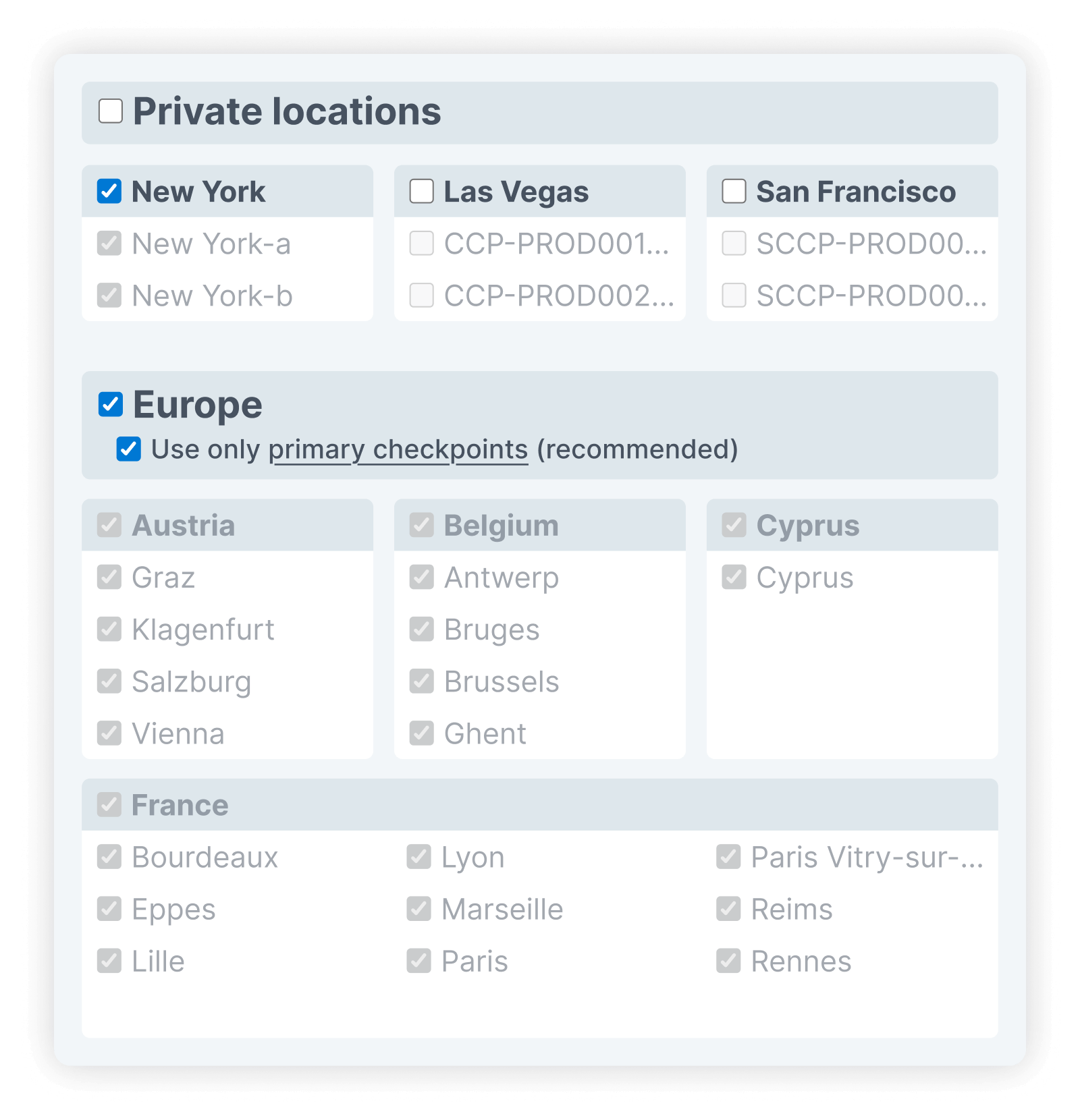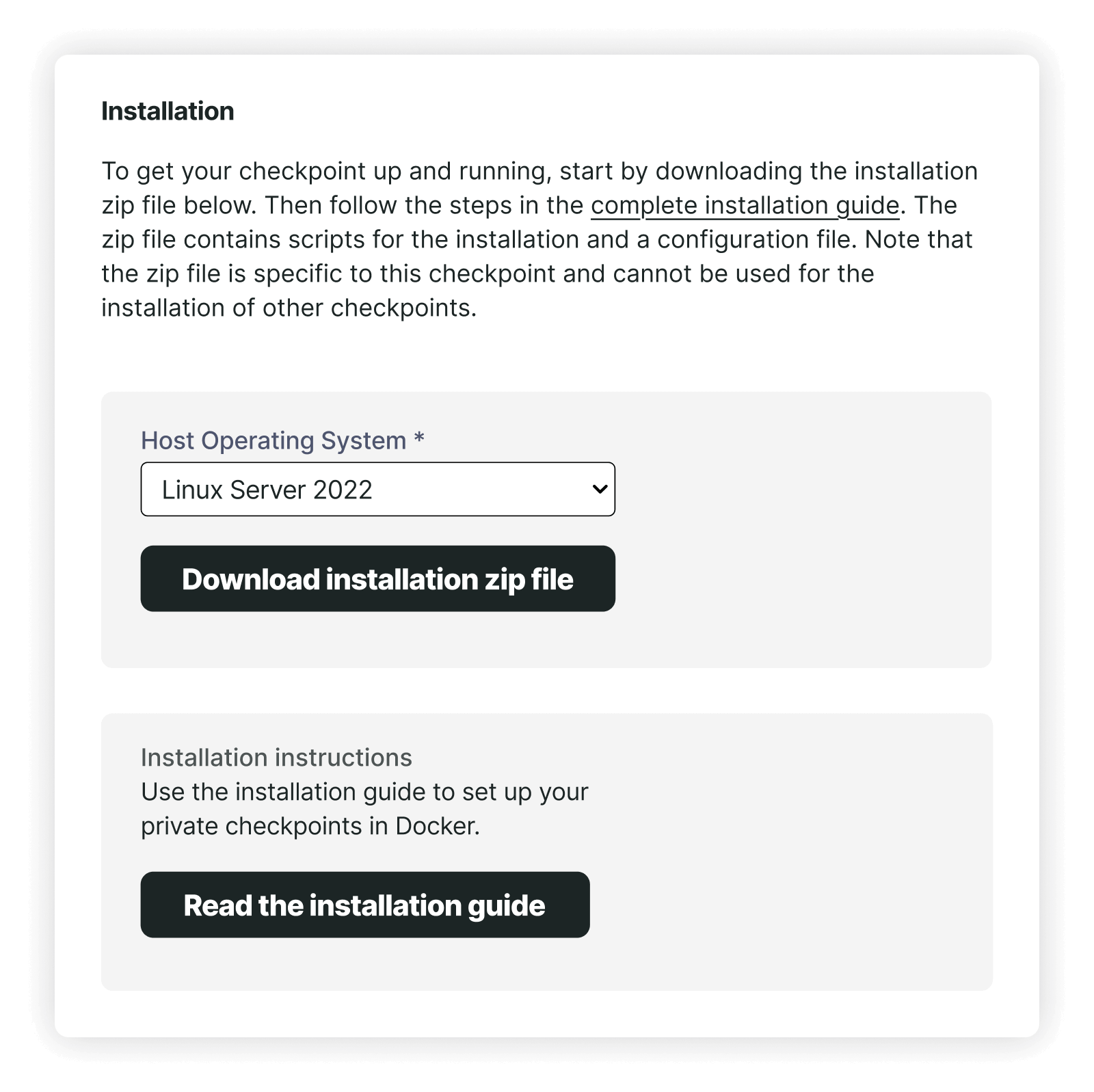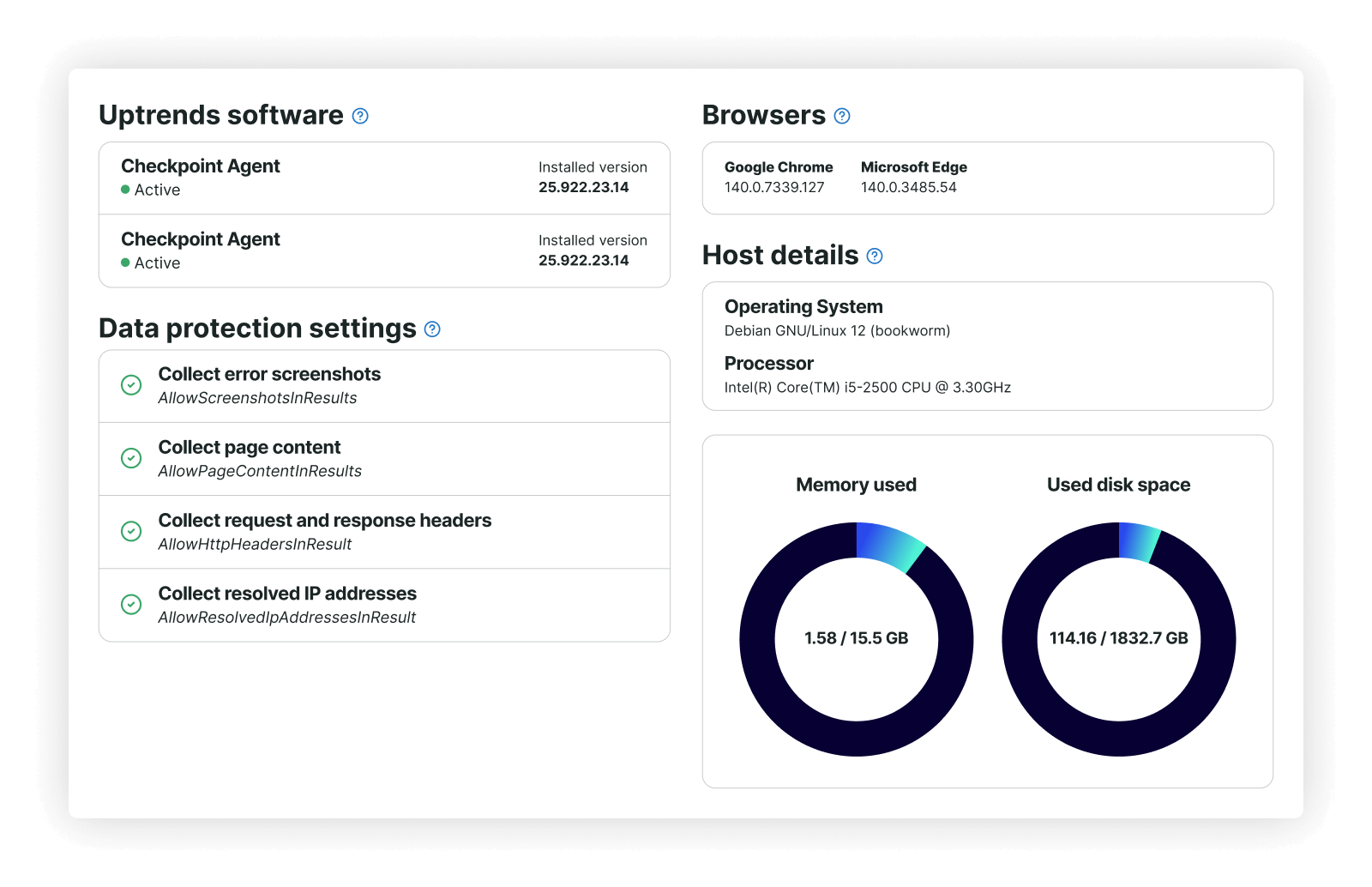What you can monitor
Test from inside your network to ensure availability and performance where public checks can’t reach.
- Intranet and internal business apps (HR portals, ERP).
- Critical external apps with internal access controls.
- APIs and web services (internal, partner, or external).
Where to deploy it
Run private monitoring checkpoints wherever your apps and systems live, for full visibility and operational control.
- Preproduction and staging environments (acceptance, QA, test).
- Core infrastructure (databases, mail servers, SFTP servers).
- Production environments behind firewalls or inside VPCs.
Get started with Linux-native monitoring
Spin up a checkpoint and run secure synthetic checks. No credit card required.
Fits your stack
Run internal checks where your apps live
Private monitoring should run in the same environments it protects. Linux Private Checkpoints are purpose-built for internal monitoring — engineered for stability and designed to fit seamlessly into cloud-first infrastructure.
- Run checkpoints on your infrastructure: Align monitoring with all your environments, from VMs to containers.
- Avoid OS-level friction: Eliminate update delays, restart requirements, and driver issues.
- Standardize across your DevOps stack: Use the same OS for monitoring as you do for apps, services, and orchestration layers.

Cuts complexity
Simplify setup and deploy with Docker
Monitoring inside secure networks shouldn’t be slow or complex. Linux Private Checkpoints deploy in minutes on servers or in containers with a lightweight footprint that reduces infrastructure costs at scale.
- Deploy in minutes with Docker Compose: No licenses, agents, or manual setup. Just drop it into your existing Linux environments.
- Scale monitoring across environments: Add checkpoints to dev, staging, or prod without heavy provisioning or rework.
- Minimize infrastructure costs: Swap out heavier Windows nodes for Linux-based ones that run lean and stay up.

Free 30-day trial
Try Linux-native monitoring today
Start monitoring your apps behind firewalls, proxies, and VPNs. Get 30 days of full access to Uptrends. No credit card required.

Frequently Asked Questions
If you'd like a closer look or personalized guidance, we'll be happy to show you how Linux-native monitoring can be tailored for your specific use cases.
Book my 1-on-1 demoYour internal apps are never exposed to the public internet — only the test results you choose to send are transmitted, fully encrypted end-to-end. Credentials are stored securely with vault integration options (e.g., Azure Key Vault) to keep authentication compliant.
Yes — Linux Checkpoints run the same commercial browsers as our global network, so your internal and external results are consistent and audit-ready. No “headless” shortcuts, ensuring you see what users see.
Absolutely, Uptrends Transaction Recorder supports OTP injection, SSO, and token reuse across scripts, so you can monitor even complex flows.
Our checkpoints ship as lightweight Docker containers for Linux, easy to drop into data centers or VPCs. Terraform and API support means you can version-control and automate deployments.
Yes, private checkpoint data flows through the same APIs as public checks, so you can stream metrics to Grafana, Prometheus, or any OpenTelemetry pipeline. Unify internal monitoring with your observability strategy.
